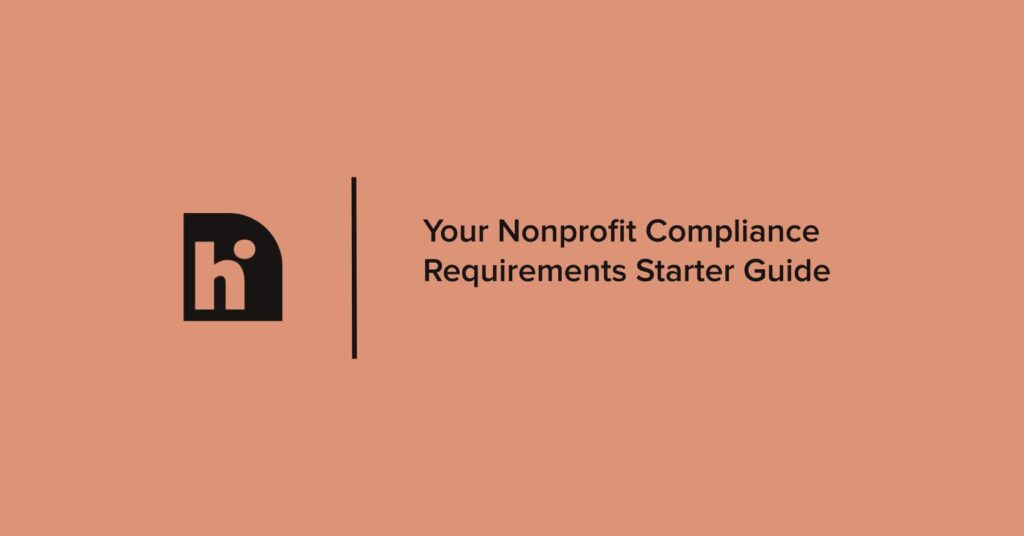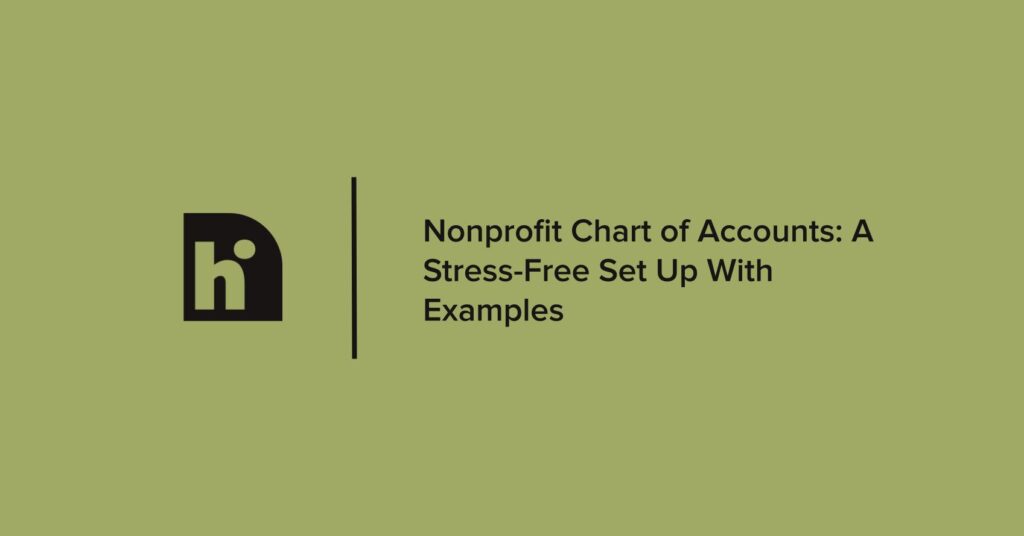How to Improve Nonprofit Financial Operations & Level Up
Written by Amanda Bower | Published: November 13, 2023
Sign up for our newsletter to receive everything from accounting advice to notifications on new tax laws.

Organizational accounting for nonprofits is in a world of its own. Unlike businesses, nonprofits must manage grants, fund accounting, and regulatory compliance.
Within the realm of nonprofit accounting, even more subsections dictate how organizations should handle their financial operations. One is accounting for small nonprofits.
Accounting for small nonprofits is unique because of these organizations’ specific needs and requirements. Smaller nonprofits have different amounts of money, scales of operation, and regulatory requirements to follow, which makes financial management, resource allocation, and budgeting processes different for them.
When leveraged properly, accounting for small nonprofits can benefit these organizations by helping them maximize their revenue and impact. However, it may require decision-makers to rethink their operations with this new lens in mind. Let’s take a closer look at how to improve nonprofit financial operations, no matter how large or small your organization.
Finance Management for Small vs. Large Nonprofits
The nuances of accounting for nonprofits make this genre of accounting very particular. Many accounting foundations are the same whether a nonprofit organization is large or small. However, to properly manage their funds and make the most of their revenue, smaller organizations typically need to focus on different accounting areas.
Before we dive into these differences (and how smaller organizations can make the most of their accounting), let’s first touch on the intricacies of nonprofit accounting:
- Revenue sources – Nonprofits don’t sell typical goods and services for their revenue; they come from different sources. The main sources of nonprofit revenue include donations (money given charitably), grants (a financial gift), and earned incomes (which can come from selling merchandise, membership fees, and program service fees).
- Accounting method – Nonprofits usually use fund accounting to manage their financial resources. This method separates them into different groups called funds. Each fund has different limits on how resources can be used (for example, if they’re restricted) and is tracked and monitored separately.
- Compliance – Nonprofit organizations have some unique needs when it comes to compliance. For example, nonprofits are often exempt from federal corporate taxes (if they file as a 501(c) nonprofit), but for that to be the case, they might need to file annual paperwork with the IRS.
- Reporting – Nonprofits also have specific financial reporting requirements, some of which are governed by the IRS and the Financial Accounting Standards Board (FASB). Typically, for a nonprofit to receive a federal grant, it needs to follow the Generally Accepted Accounting Principles (GAAP) outlined by the FASB.
- Donor management – Donors are integral to nonprofit revenue and operations and are typically a core source of revenue. But earning the support of donors (both financially and otherwise) takes effort. Fiscal and non-fiscal aspects of donor management can include identifying donors who are in alignment, communicating with them, receiving and allocating donations appropriately, and transparently communicating how funds are used.
With those nonprofit accounting basics in mind, here are some ways smaller nonprofits can rethink their accounting approach to make the most of their financial resources.
6 Way to Improve Nonprofit Financial Operations
1. Simplify Budgeting
Smaller nonprofits operate with smaller budgets than their larger counterparts, and because of this, they benefit from simplified budgeting processes. This might involve using simpler accounting processes or software to manage a nonprofit budget, which can easily track income, expenses, grants, donations, and program costs without complex accounting systems. Their budgets can also focus on key categories, such as program expenses and administrative costs, along with simplified income sources (such as donations, grants, and fundraising events).
Additionally, a simplified budget might group expenses into broader categories instead of including many derailed line items. It might also provide a straightforward breakdown of expected income and anticipated expenses, allowing an organization to easily monitor its financial health.
2. Focus on Core Programs
While it can be tempting to launch many different and complex programs, smaller nonprofits might benefit from focusing on their core programs. By concentrating on core programs, smaller nonprofits can maximize their resources, including funding, staff time, and volunteers. This focus also enables smaller nonprofits to develop specific expertise and knowledge in their chosen areas, helping them become leaders and experts in their space and increasing their credibility.
Similarly, concentrating on core programs allows smaller nonprofits to potentially deliver more effective and impactful services. Instead of spreading themselves “too thin,” smaller nonprofits can achieve more meaningful and measurable results. This idea can also lead to cost efficiency, allowing organizations to minimize unnecessary expenses for managing ancillary programs and activities.
3. Hands-On Financial Management
Smaller nonprofits typically aren’t going to have massive, multi-tiered accounting departments. Instead, they can benefit from hands-on financial management, whether that comes internally or from an outsourced solution. Hands-on financial management can allow smaller nonprofits to still have the expertise and guidance of accounting professionals without the excess cost and complications of other accounting solutions.
Hands-on accounting management allows immediate oversight and control over the organization’s financial transactions. It enables the organization to closely monitor income, expenses, and budgetary allocations, ensuring financial resources are utilized efficiently and per the nonprofit’s objectives.
4. Grants and Donations
Grants and donations can be approached similarly to large nonprofits but with a few special considerations. First, it takes resources to identify and apply for relevant grants, and smaller nonprofits have fewer resources. Because of this, they can select and choose their grant and donation targets carefully and only engage with donors/grantmakers who might be the best fit for their mission and purpose.
Smaller nonprofits can also benefit from building relationships with donors and successful grantmakers. Instead of needing to forge new pathways and spend resources on obtaining new donor/grant sources, they can lean on these relationships for continued financial support. In general, data shows us that the typical donor retention rate is between 40-45%.
5. Volunteer Involvement
Volunteering can be a major addition to smaller nonprofits’ operations. Volunteers contribute time and energy to a nonprofit and its programs and can help smaller ones “fill the gaps” regarding staffing and operations. Volunteers can also bring diverse skills and expertise to the organization, including marketing, finance, technology, and program management.
Additionally, volunteers can expand their organization’s overall capacity with the help of volunteers by providing additional staffing to support various activities and initiatives. This can include assisting with program implementation, event planning, administrative tasks, and fundraising efforts, allowing the nonprofit to accomplish more without needing additional paid staff.
6. Compliance and Reporting
While compliance and reporting are crucial for all nonprofits, they’re even more crucial for smaller ones to get right. First of all, all nonprofits are subject to legal requirements and regulations that govern their operations, and it’s critical to adhere to them to stay operational and avoid fines or penalties.
Compliance and reporting are also essential for donor confidence. Donors (individuals, foundations, or government agencies) often seek evidence of strong financial management and transparent reporting before making contributions. Proper compliance and reporting practices can give donors the confidence to contribute financially to an organization.
Additionally, many grants and funding opportunities require specific compliance and reporting standards (as is the case with the GAAP). When smaller nonprofits have proper compliance and reporting practices, they’ll be well-positioned to apply for grants.
Share this article
Read Similar Articles

Accounting
Your Nonprofit Compliance Requirements Starter Guide

Accounting
Nonprofit Chart of Accounts: A Stress-Free Set Up With Examples
